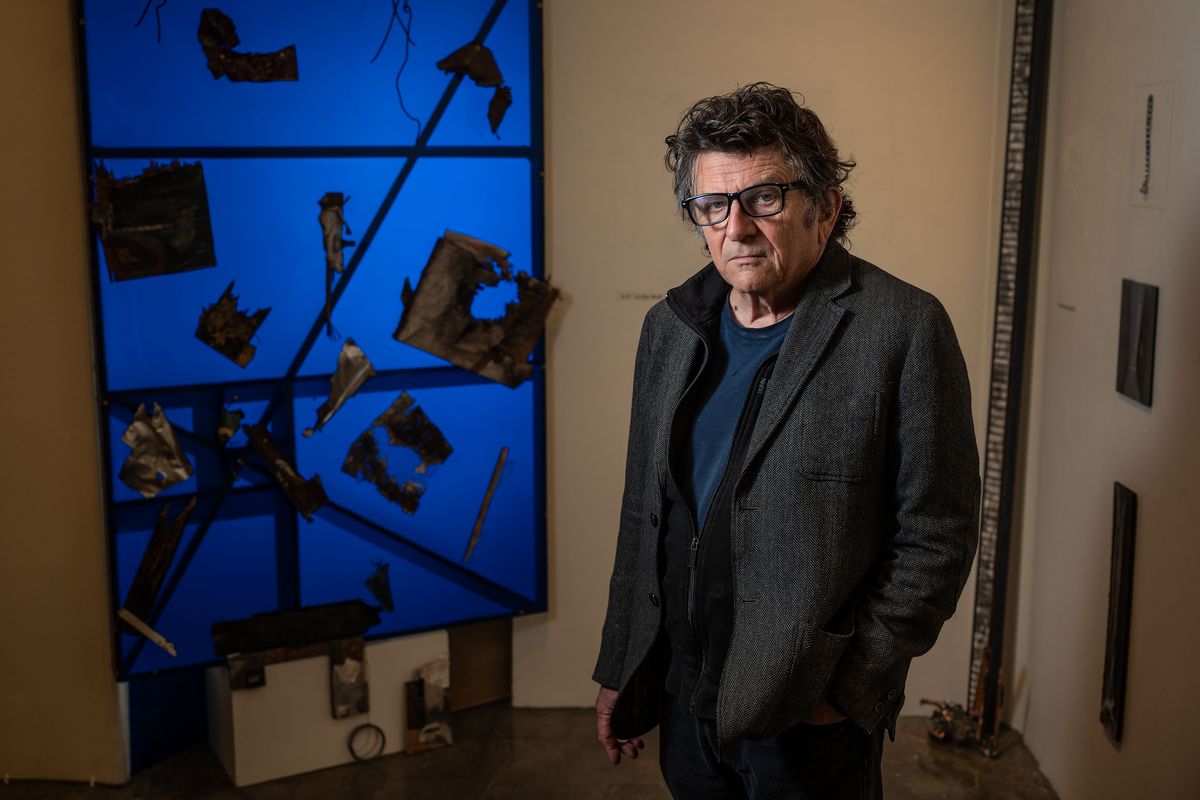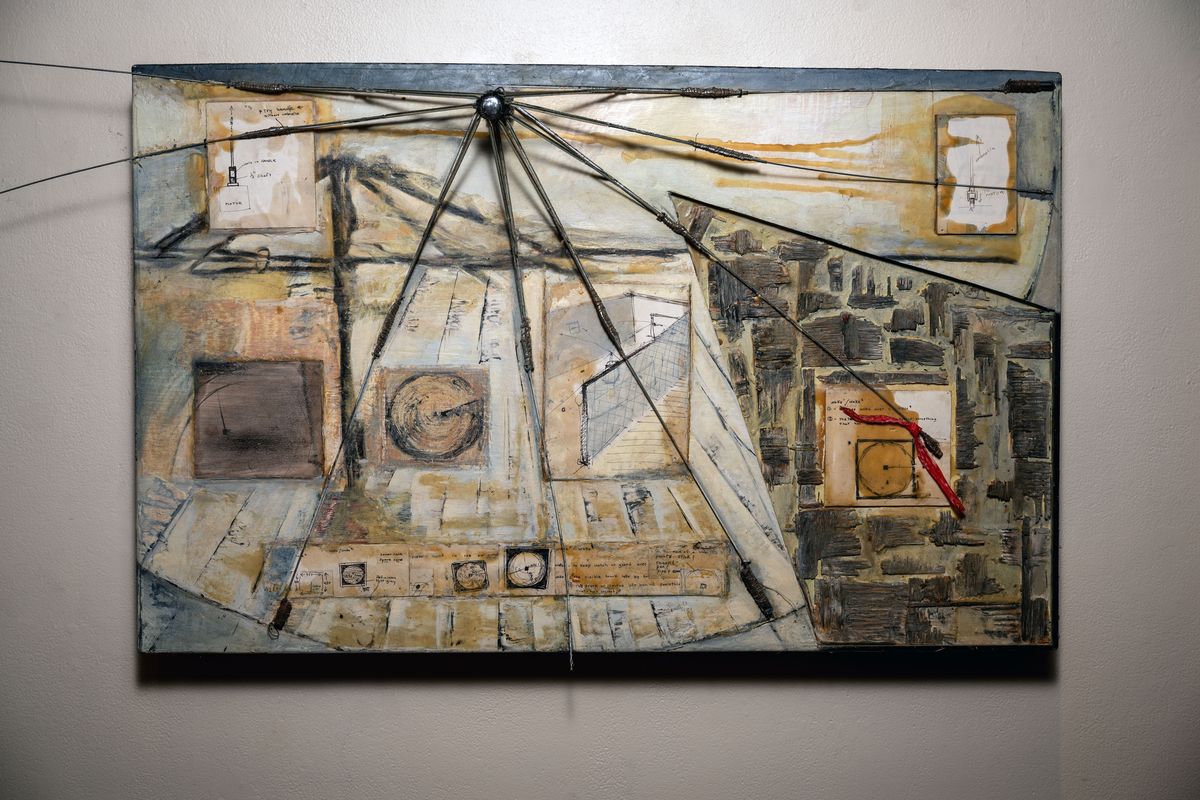Transformations of time have shaped artist Tom O’Day’s work


Local artist and professor of art Tom O’Day retired last spring from his long-held position at Spokane Falls Community College. A Southern California native, O’Day has devoted his career to expanding Spokane’s exposure to art and doing what he loves: creating and teaching.
In the fall of 1985, O’Day arrived in Spokane for the first time. Not long before, O’Day had received a call from a friend – a Spokane native – that he should get out of L.A. and move up north.
“I was really done with L.A., and so I said, ‘OK, how do I get to Spokane? Where is it?’ I didn’t even know where it was,” O’Day said.
He loaded up a van and drove north, leaving behind his home of five years in L.A. O’Day was one among a notable community of artists who lived in warehouse space downtown. Life was changing for the young artist.
Before arriving in Spokane, O’Day had heard from that same friend that “there was no art in Spokane.” O’Day, a graduate of Cal State Long Beach with a degree in art, didn’t quite find that to be the case. He soon landed a job teaching at Spokane Art School working with kids as young as 5 years old.
“I just had a blast. My experience there was terrific,” he said during a phone interview on Tuesday. “My energy level was so high. A lot of times jobs can suck everything out of you. This just kind of energized me.”
Spokane Art School was O’Day’s entrance into the local art scene. In winter 1986, O’Day took his first role at SFCC as a part-time professor. By the end of his career, he would be full time and manager of the school’s gallery.
“The artists (in Spokane) were pretty traditional,” he recalls. “I was able to bring (artists from L.A.) to Spokane so the people here could see something outside of their usual niche.”
O’Day’s art is by no means “traditional.” Of contemporary artists, he said “I’m one of them, I guess.” Certainly, “contemporary” is a word one could use to describe O’Day’s work. But that sort of generalization loses a lot of what makes O’Day’s art interesting.
Always present in O’Day’s work are the transformations of time. In a certain sense, that means the time-weathering of physical things, like a branch rolling down a hill, but in another it means O’Day’s vision of how a piece or an object changes over time.
At his current exhibition, in the SFCC Fine Arts Gallery through Oct. 22, viewers will quickly notice a focus on one particular tree branch. The branch is a great example of what much of O’Day’s art is about.
“(The branch) slid down a hill that’s sort of by my house and my studio, and I watched it for a whole year, and when it got to the road, I took it home.” He points to a video of a shaky camera, occasionally showing recognizable images of a road, a branch, a leg. “This is me dragging it home.”
Right above the video is a series of charcoal sketches of the branch. They’re beautifully done, each on a small square and all arranged in separate groups.
The branch appears again in a series of photographs printed on paper. Each photograph is a small, up-close fragment of the branch. The papers are then arranged to make an almost full-scale printing of the 15-plus-foot branch.
Then, across the gallery is the branch itself, only about 20 feet long, chopped up into large segments and joined by dowels. Many of its features are embellished with copper leaf. Each addition marks a new iteration on the original branch.
The wall behind the branch is covered with sheets of paper. “This piece is going to continue in a different way; it’s going to be a drawing of the shadow,” he said. “So, again, that idea of it turning into something else.”
“It’s gone through a lot of transformations, and it’s been shown more than once,” he described. “A lot of my work gets shown numerous times but in different formats so that the work sometimes even looks completely different.”
Pointing out a veil of pieces hanging from the ceiling, he says (as though it doesn’t need further explaining) “these are remains from an explosion I did.” Explosions?
“I started eliminating some of the pieces that I didn’t feel were as strong,” he explains. “I started with 50 pieces to destroy, and I ended up with 500.” There’s a poster made from the photograph of one such explosion; the fireball, he said, was 250 feet tall.
His explosion pieces (art turned waste with explosives turned art again) are strung up from the ceiling in a veil separating the back room from the front, drawing a thematic line in the studio.
He goes further, though, in turning the gallery space itself – with which he has grown so familiar over the past several decades – into art. O’Day refers to a black “X” in the wall, and says, “I buried a piece in the wall, where that X is, so I’m going to dig it out.”
He pauses. “It’s been in the wall for over 10 years, and I kind of know where it is.” The gallery wall is being opened up with a chisel throughout the exhibition.
It’s clear that for his art, O’Day’s time in L.A. was very influential. But in a very literal way (branch on the side of the road, wall of a local gallery) his art has been shaped from his surroundings here in the Inland Northwest.
“I like things to be real life, and I like things to be – not necessarily autobiographical – but just daily stuff going on. Like that branch.”
The exhibition’s name, “Exit-X-It” is a twofold exit of sorts, one for him, as he retires from his long career in Spokane art education, and a second for that “X” in the wall, from which a piece of art will “exit.”
The exhibition is open from 8:30 a.m.-3:30 p.m. Mondays through Fridays at the SFCC Fine Arts Gallery, 3410 W. Fort George Wright Drive, through Oct. 22. Maximum occupancy is eight people due to COVID-19 restrictions, masks are required, and the flow of people through the gallery is one-directional to minimize crossing others’ paths.